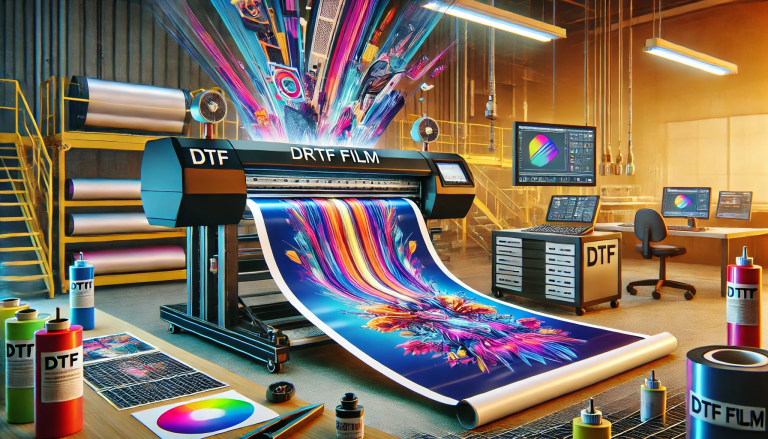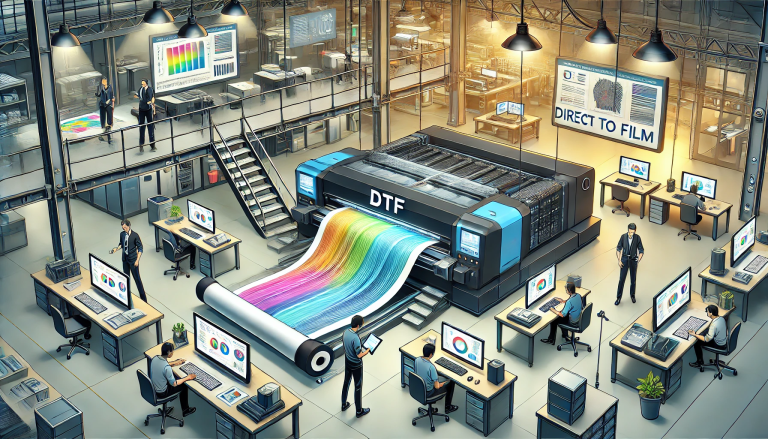Introduction to DTF Film A3
In the fast-paced world of digital printing, the introduction of Direct to Film (DTF) technology has revolutionized the industry, providing a versatile and cost-effective alternative to traditional printing methods. Among the various formats available, DTF Film A3 has emerged as a particularly significant innovation, catering to a wide range of printing needs while offering unprecedented quality and efficiency. This article delves into the essence of DTF Film A3, exploring its advantages, applications, and the transformative impact it is having on the printing landscape.
The Core of DTF Technology
DTF printing technology represents a significant leap forward, allowing for the transfer of digital designs onto various substrates, including textiles, ceramics, and more, without the need for pre-treatment processes that are often required in other printing techniques such as Direct to Garment (DTG). At the heart of this technology lies the DTF Film A3, a specially coated film that serves as the medium for printing before the image is transferred to the final product. This film size is particularly appealing due to its compatibility with standard A3 printers, making it accessible to both small businesses and individual enthusiasts alike.
Flexibility and Creative Possibilities
One of the foremost advantages of DTF Film A3 is its flexibility. Unlike traditional screen printing, which requires different screens for each color, DTF printing allows for full-color graphics with intricate details to be printed in a single step. This not only reduces production time but also minimizes the costs associated with labor and materials. Furthermore, DTF Film A3 can adhere to a wide range of fabrics, including cotton, polyester, and blends, without compromising the vibrancy or durability of the print. This versatility opens up a plethora of creative possibilities for fashion designers, merchandisers, and even home crafters, enabling them to bring their visions to life with ease.
Quality and Durability
In addition to its versatility, DTF Film A3 is renowned for its superior quality and durability. The prints produced using this method are characterized by their sharpness, color saturation, and resistance to washing and fading. This is particularly beneficial for the apparel industry, where longevity and color fastness are critical factors in customer satisfaction. Moreover, the ability to print on demand with DTF technology reduces waste and inventory costs, making it an environmentally friendly and economically viable option for businesses of all sizes.
Diverse Applications and Market Opportunities
The applications of DTF Film A3 are vast and varied, ranging from custom apparel and accessories to home décor and signage. For instance, small businesses can leverage this technology to offer personalized t-shirts, hoodies, and hats, while artists and designers can produce limited-edition prints on fabrics, enhancing their product offerings. Furthermore, the ease of use and relatively low investment cost make DTF Film A3 an attractive option for startups and entrepreneurs looking to enter the competitive market of custom printing.
Challenges and Future Prospects
However, despite its numerous benefits, the adoption of DTF Film A3 is not without challenges. The initial setup costs, including the printer, inks, and powder, can be significant for small-scale operators. Additionally, mastering the DTF printing process requires technical knowledge and experimentation to achieve optimal results. Nevertheless, with the growing availability of resources and community support, overcoming these hurdles is becoming increasingly feasible.
Conclusion
In conclusion, DTF Film A3 stands as a testament to the innovation driving the digital printing industry forward. Its combination of quality, versatility, and efficiency not only challenges traditional printing methods but also opens up a world of opportunities for creative expression and entrepreneurial ventures. As we look toward the future, the continued development and refinement of DTF technology promise to usher in an era of printing that is more accessible, sustainable, and boundless in its potential.




